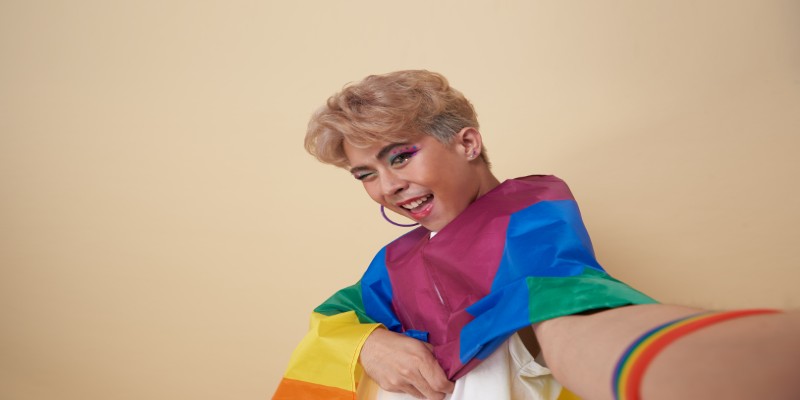The Rise Of Genderless Fashion: When Clothing Has No Boundaries
In the ever-evolving world of fashion, a new movement is taking center stage: genderless fashion. As society becomes increasingly aware of the complexities of gender identity, traditional norms surrounding clothing are being challenged and redefined. This shift towards gender neutrality in fashion reflects a growing recognition that clothing should not be confined to binary classifications of "male" and "female." Instead, it embraces a more inclusive approach, where individuals can express themselves authentically without the constraints of conventional gender roles. In this article, we will delve into the rise of genderless fashion, examining its origins, the current landscape, and its implications for the future of self-expression in clothing.
Understanding Genderless Fashion
At its core, genderless fashion aims to break down the barriers that have historically defined clothing by gender. Rather than adhering to a binary classification of clothing, this style promotes garments that can be worn by anyone, regardless of their gender identity. This shift is rooted in a growing understanding that gender is not strictly binary; it exists on a spectrum. Genderless fashion embraces this complexity, allowing individuals to express themselves authentically without the confines of traditional gender norms.
The rise of this fashion movement is indicative of a cultural shift. As conversations about gender identity and expression become more prevalent, designers and brands are responding to these changes by creating clothing that is inclusive and representative of diverse identities. This means that garments are designed not only for specific body types but also for a variety of gender expressions.
Historical Context
While genderless fashion seems like a modern phenomenon, its roots can be traced back to earlier movements in fashion history. For instance, in the 1960s and 70s, the unisex movement began to gain traction. Designers like Pierre Cardin and André Courrèges introduced clothing that blurred gender lines, offering styles that anyone could wear. However, this movement was often met with resistance, as societal norms continued to dictate strict gender roles.

Fast forward to the early 21st century, and the conversation around gender fluidity began to gain momentum, especially with the rise of LGBTQ+ visibility and advocacy. As individuals began to assert their right to express their gender in ways that felt true to them, fashion responded. In 2015, designer Jaden Smith made headlines by modeling for Louis Vuitton's women's collection, marking a pivotal moment in mainstream fashion where gender boundaries began to dissolve.
The Current Landscape Of Genderless Fashion
Today, genderless fashion has permeated the mainstream, with numerous designers and brands embracing this inclusive approach. High-profile labels such as Gucci, Balenciaga, and Telfar are leading the charge, offering collections that showcase gender-neutral clothing. These brands are not just removing labels from their garments; they are rethinking the very essence of fashion design.

In addition to luxury brands, numerous streetwear labels have adopted genderless aesthetics, recognizing the appeal of inclusive styles among younger consumers. Brands like Ader Error and Y/Project are creating pieces that celebrate individuality and personal expression, further pushing the boundaries of traditional fashion norms.
The rise of online shopping and social media has also played a crucial role in this movement. Platforms like Instagram and TikTok allow for the rapid dissemination of new ideas and styles, making it easier for consumers to find and engage with genderless fashion. Influencers and everyday users showcase their unique styles, challenging conventional notions of masculinity and femininity and demonstrating that fashion can be a powerful tool for self-expression.
Challenges And Criticism
Despite the progress made, the rise of genderless fashion has not been without challenges. Some critics argue that genderless clothing can sometimes be marketed as a trend rather than a genuine shift towards inclusivity. This can lead to a commodification of gender identity, where brands capitalize on the movement without making meaningful changes in their practices or representations.

Moreover, there is a concern that genderless fashion may inadvertently erase the experiences of those who identify strongly with traditional gender roles. For some, clothing is a critical part of their identity, and the push for gender neutrality could feel like an oversimplification of their experiences. The challenge for designers and brands is to create collections that honor and respect diverse gender identities while still offering options for those who prefer more traditional styles.
The Role Of Sustainability
Another aspect of the genderless fashion movement is its connection to sustainability. As the fashion industry grapples with its environmental impact, many brands are adopting more sustainable practices. Genderless clothing often promotes minimalism, focusing on versatile pieces that can be mixed and matched, reducing the need for excessive wardrobes.

By designing clothes that transcend gender boundaries, brands encourage consumers to invest in pieces that can be worn in various ways, promoting a more sustainable approach to fashion consumption. This shift towards thoughtful consumption is not only beneficial for the environment but also aligns with the values of many consumers today, particularly younger generations who prioritize sustainability in their purchasing decisions.
The Future Of Genderless Fashion
Looking ahead, the future of genderless fashion appears promising. As society continues to embrace diversity and inclusivity, fashion will likely evolve to reflect these values. More brands are expected to launch gender-neutral collections, and educational institutions may incorporate gender studies into fashion programs, fostering a new generation of designers who prioritize inclusivity.

Additionally, advancements in technology, such as 3D printing and digital fashion, may further revolutionize the industry. These technologies could allow for custom fits and styles that cater to individual preferences, making it easier for consumers to find clothing that resonates with their identities.
Conclusion
The rise of genderless fashion signifies a broader cultural shift towards inclusivity and self-expression. By breaking down the barriers of traditional gender norms, this movement allows individuals to embrace their identities without restriction. While challenges remain, the growing acceptance and demand for gender-neutral clothing indicate that this trend is more than just a moment in fashion; it represents a profound change in how we view ourselves and our clothing.
As we move forward, designers, brands, and consumers alike need to engage in conversations about inclusivity, representation, and sustainability. The future of fashion lies in our ability to celebrate diversity and to create spaces where everyone can feel seen and valued, regardless of gender. In this evolving landscape, clothing will continue to be a canvas for self-expression, unbound by traditional labels and definitions.





